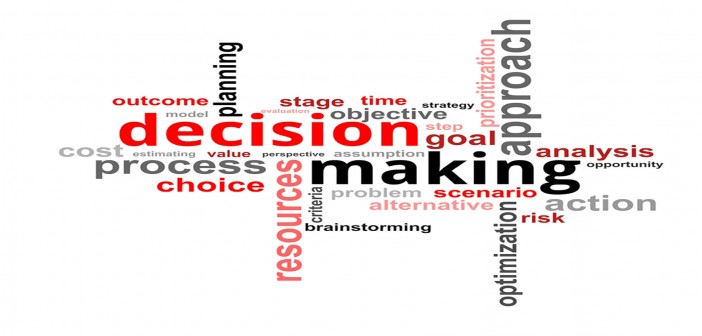This morning I saw this checklist in HBR’s Management Tip of the Day and I thought it was worth sharing. It is “A Checklist to Help You Make Better Decisions Faster”:
- Write down five company goals that will be impacted by the decision. This helps you avoid the rationalization trap of making up reasons for your choices later.
- Write down at least three realistic alternatives.
- Write down the most important information you are missing.
- Write down the impact your decision will have a year from now.
- Get buy-in from a team of at least two (but no more than six) stakeholders. Hearing different perspectives reduces your bias, but bigger groups have diminishing returns.
- Write down what was decided as well as why and how much the team supports the decision. This increases commitment and helps you measure results.
- Schedule a follow-up in a month or two to make course corrections.
This checklist attracted my attention because it came to me right on the heels of a workshop that I delivered to a group of Supply Chain professionals last week. One of the strategic competencies we attempt to build during all of our workshops is helping teams to learn how to make better decisions. What I see time and time again in my training sessions is both individuals and teams rushing to get a decision made quickly. They do not take the time to PLAN which ultimately ends up in a sub-optimal decision or no decision at all. We actually do several team problem solving exercises in every workshop with lessons learned after each – pointing out that planning is the key to success. Unfortunately, it takes many, many sessions and numerous exercises for them to get it. Even when making a decision that is time-bound (needs to be made quickly) spending a small percentage of time upfront to plan will pay huge dividends.
Many of us may think of decision making as an art but there is definitely a science behind it as well. This is one of those strategic competencies that is often overlooked even though it is a skill that we use every day. You find VERY few training courses for decision making (We, at The Mpower Group, have an excellent one) that teach the “science” of decision making. The “art” comes from PRACTICE (Adoption) but that practice needs to incorporate the science.
While I think the list above is excellent, I would like to add a few items of my own to the checklist above:
- First, define your objective. Clearly define the problem you are trying to solve or the decision you are trying to make. This is critical and THE biggest issue we see with ALL of our workshop participants (thousands . . . . . ) . Failure to ensure that everyone involved in the decision making process is aligned around WHAT decision you are trying to make must be done. This is PLANNING.
- Next, do some meta thinking – decide HOW you are going to decide. WHO needs to be involved whether you need consensus or not, the timeframe under which the decision needs to be made, etc. THIS IS PLANNING.
- After # 2 above where you “write down three realistic alternatives” (these are hypotheses) write down the questions you will need to answer to determine whether those alternatives will work. These questions are critical because they will help you to prove or disprove your hypotheses AND guide your information gathering. This will also help you to determine # 3 above “the most important information you are missing”.
If you want to do one thing today to increase your leadership competency, take these lists and USE them. You will be a much more effective decision maker and leader.
Let us know what you thing and join in the conversation….


4 Comments
Pingback: What Kills More Women? - News You Can Use
Pingback: Do you Know the Difference between Strategic Sourcing & Category Management?- PERT- CPOs Meet to Discuss Issues
Pingback: Why You Might Need Some Governance - News You Can Use
Pingback: Why Worry About Metrics? - News You Can Use